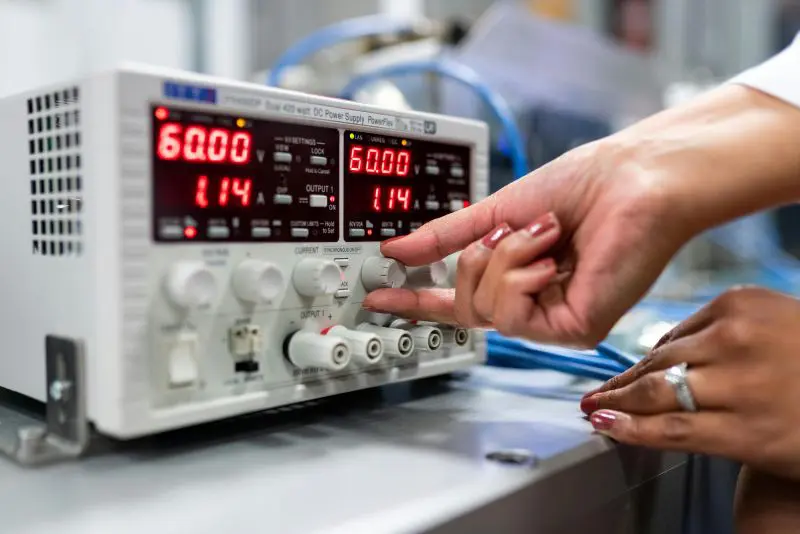MIL-STD-810 power requirements for Units Under Test (UUT) includes using variances in power quality that would be encountered when installed on their intended power networks. Military aircraft, vehicle, and shipboard power systems typically have variances in voltage and frequency as well as phase distortions, ripple, surges, and spikes. These electrical stresses, when combined with environmental conditions encountered in MIL-STD-810 testing can cause permanent and intermittent failures in the UUT.
Information concerning power fluctuations for military platforms can be found in the following standards:
- RTCA DO-160 Environmental Conditions and Test Procedures for Airborne Equipment
- MIL-STD-704 Aircraft Electrical Power Characteristics
- MIL-STD-1399 Interface Characteristics for Shipboard Equipment
- MIL-STD-1275 Characteristics of Volt DC Input Power to Utilization Equipment in Military Vehicle
Further Guidance Available in Method 520
Method 520 Combined Environments in MIL-STD-810 is used to evaluate the synergistic effects of climatic stressors, vibration, and electric power on equipment designed for aircraft and rotary wing platforms. It can be used for engineering development, in support of flight or mission support, or to demonstrate compliance to specification requirements. Use of all expected electrical stresses is required in this test method. As such, the method provides guidance for creation of test schedule development for AC and DC operational stresses.
Section 2.2.4.4.1 of Method 520 provides an input voltage and frequency test schedule for high, low, and nominal states. It then provides voltage, ripple, and frequency ranges for normal, abnormal, and emergency modes of operation per MIL-STD-704. It then provides guidance for ranges for military vehicles per MIL-STD-1275. Additionally, it provides power input characteristics for commercial aircraft per DO-160. Although not provided in method 520 ranges for shipboard equipment can be found in MIL-STD-1399-300 Interface Characteristics for Shipboard Equipment.
Concerns for Developing Test Plans and Test Equipment
The introduction of electrical characteristics to environmental testing adds multiple levels of complication. Firstly, test support equipment must be acquired and integrated into the test methodologies. This will involve design and programing resources. Then schedules for power variances must be created and documented in the test plans functional and operational test sequences. Inclusion of electrical stresses will also increase time at lab due to set up and length of operational tests. This can create delays in test program completion and add testing costs.
CVG Strategy EZ-Test Plan Templates
CVG Strategy provides a wide array of test plan templates that meet industry standards. This documentation ensures that testing is performed accurately and that necessary data is collected. These documents help communicate test requirements to test facility operators and test engineers. Test plans are available for the following standards:
- MIL-STD-810 Environmental Engineering Considerations and Laboratory Tests
- MIL-STD-461
- MIL-STD-704
- MIL-STD-1275
- MIL-STD-1399-300B
- IEC 60529
Several categories of test plans are available for developmental test and evaluation of defense products. These include:
Ingress Protection test plans are available for testing per IEC 60529 for enclosure testing against dust, penetration, water splash, water jet spray, and immersion.
MIL-STD-810 Training
CVG Strategy offers a two-day Training for MIL-STD-810 Program designed to provide you with a solid basis to build your knowledge and expertise. This live training webinar will give you and your employees who are new to environmental and dynamic testing a jump start towards understanding and learning the very complex and lengthy testing standard and its methods.
CVG Strategy Test and Evaluation Expertise
CVG Strategy can assist your product development team with test and evaluation expertise. We provide can provide compliance by analysis reports, create custom test program documentation, provide troubleshooting and analysis for difficult EMI/EMC issues and perform finite element analysis.



